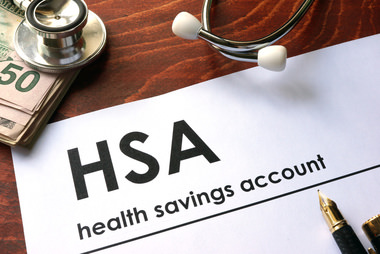Take a Look at the New HSA Plan Limits
For 2018, individuals can contribute up to $3,450, up from $3,400 in 2017, while family contributions are up to $6,900, up from $6,750 in 2017.
The maximum out-of-pocket figures are up too: $6,650 for single coverage, up from $6,550 in 2017, and $13,300 for family coverage, up from $13,100 in 2017.
A U.S. House of Representatives’ bill includes enhancements to HSAs, essentially doubling contribution limits, pegging them to out-of-pocket maximums. Nothing is certain, but it’s instructive to see what the future of HSAs could look like. Of course, the volatile situation regarding the Affordable Care Act could change everything.
Employees can open an HSA only if they have a high-deductible health insurance plan. They are triple tax-advantaged:
- You get a tax break going in — the money you contribute to the account, usually through payroll deductions, goes in pretax.
- The money you contribute grows tax-free.
- If you use it for out-of-pocket health care expenses, including deductibles, distributions are tax-free as well.
A 20 percent penalty and income taxes apply if you take money out before you’re 65 and spend it on something other than eligible health care expenses.
A health savings account is not a use-it-or-lose-it account like a health care flexible spending account — employees can keep their HSA even if they change employers. It’s a great way to build up tax-free savings for retirement health care needs — COBRA, Medicare, and long-term care premiums are all eligible expenses.
If you don’t already have an HSA, it’s a safe bet that one will be in your future. How much you’ll be able to save depends on what’s going on in Congress, and around the country with citizens vocalizing their opinions.
In addition to doubling HSA contribution limits, the bill also helps HSAs by cutting the penalty for nonmedical-related withdrawals before age 65 from 20 percent since the enactment of the ACA back to 10 percent. It also establishes the right to pay for over-the-counter medications without a prescription with your health savings account dollars.
While the ACA allows parents to add their adult children up to age 26 to their health plans, the tax laws regarding HSAs haven’t changed — an adult child must still be considered tax-dependent for an adult child’s medical expenses to qualify for payment or reimbursement from a parent’s HSA. So, if account holders can’t claim a child as a dependent on their tax returns, then they can’t spend HSA dollars on services provided for that child.
Also, the Department of Health and Human Services (HHS) established annual out-of-pocket or cost-sharing limits under the ACA. HHS has published its 2018 ACA out-of-pocket limits — the ACA requires the out-of-pocket maximum to be updated annually based on the percent increase in average premiums per person for health insurance coverage.
Experts note that with HSAs slated to play a pivotal role in health care reform, contribution limits may soon be uncoupled from traditional inflation increases, giving Americans greater capacity for care-related tax savings. But for now, everything is still on the drawing board.





